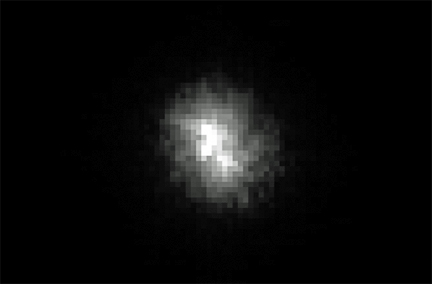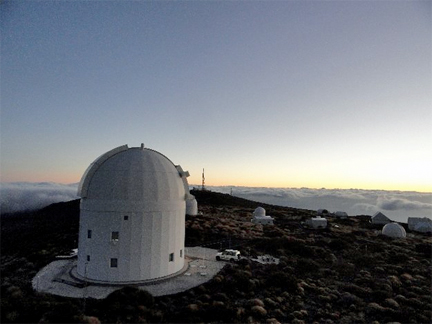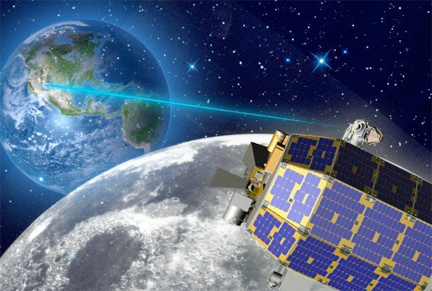
The first LADEE laser signal was acquired by ESA’s Optical ground Station, Tenerife, Spain, at 06:36 GMT on 26 October 2013. The light beam from the Moon was transmitted at 1550nm wavelength.
Image courtesy of ESA.
The data were delivered many times faster than possible with traditional radio waves, marking a significant breakthrough in space communications.
The Lunar Atmosphere and Dust Environment Explorer, or LADEE, was launched on 7 September and arrived in orbit around the Moon in October. In addition to probing the Moon’s environment, it’s also carrying a new laser terminal. This new approach promises data speeds far superior to traditional radio waves used today by satellites and ground stations, including the Agency’s Estrack network.
ESA’s Optical Ground Station in Spain’s Canary Islands was upgraded with an advanced laser terminal developed in Switzerland and Denmark that can communicate with LADEE using highly focused beams.
“We acquired the first signals from LADEE on October 26th, and since then, we’ve had a series of optical uplinks and downlinks providing extremely fast laser communications,” says Zoran Sodnik, ESA’s project manager for the laser effort. “We’ve already received data at up to 40Mbit/s—several times faster than a typical home broadband connection.”

ESA's Optical Ground Station (OGS) is 2400 m above sea level on the volcanic island of Tenerife. Aside from experiments for quantum communication and teleportation, the OGS is also used for standard laser communication with satellites, for observation of space debris or for finding new asteroids.
Photo courtesy of ESA.
“The participation of the ESA ground terminal at Tenerife in NASA’s project is an important milestone in this new capability,” said Badri Younes, deputy associate administrator for space communications and navigation at NASA’s Headquarters in Washington DC. “Together, we have demonstrated at the very beginning of the optical communication era the value of interoperable communication between our space agencies.”
With the first two communication passes with LADEE on 26 October and six more to 29 October, the ESA team on Tenerife are tweaking the station hardware—especially for the uplink—and improving procedures.

On October 22nd, 2013, NASA's Lunar Laser Communication Demonstration (LLCD), on board the Lunar Atmosphere and Dust Environment Explorer (LADEE) spacecraft, made history using a pulsed laser beam to transmit data over the 400 000 km between Earth and the Moon at a record-breaking download rate of 622 megabits per second (Mbps).
Artistic rendition courtesy of ESA.
During the coming weeks, ESA engineers will test uplink communications at 20 Mbit/s and obtain accurate ‘time-of-travel’ measurements to be used for calculating the spacecraft’s orbit. Using special equipment from the DLR German Aerospace Center’s Institute for Communication and Navigation, the team will monitor atmospheric conditions during transmission and learn how to improve performance even further.

